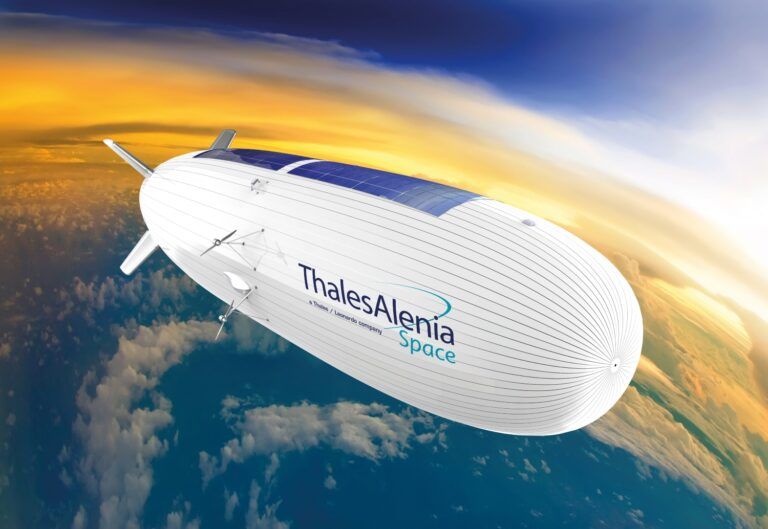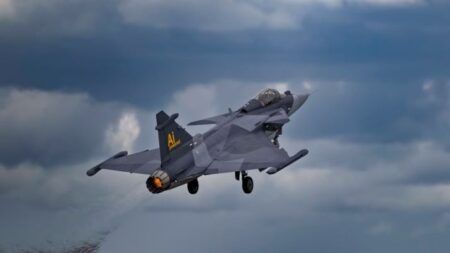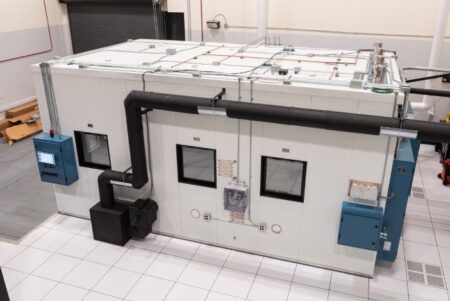Thales Alenia Space has signed a €43 million contract that should finally see its Stratobus high altitude airship fly.
Stratobus is a 140m long non-rigid stratospheric airship inflated with helium that maintains its shape through internal pressure and uses an electric propulsion system. The aircraft is propelled by four electric motors and powered by more than 1,000 square meters of solar cells.
It has the capability to operate at altitudes of 18 to 20km (11 to 12 miles) and engineers believe it will be able to carry payloads of up to 250kg (550 lbs).
The high-altitude persistent airship was originally conceived to perform ISR (intelligence, surveillance, and reconnaissance), communications, environmental monitoring and navigation.
Stratobus has been in development since 2010 in France, during which time engineers have developed the airship’s envelope and flexible solar concentrator, envelope tear technology for safety aspects, and high-efficiency propulsion system. However, a full-scale demonstrator has yet to be flown and the version to be flown will also be of a reduced scale.
Startolaunch is one of several high altitude vehicles to be trialled as part of an EU-finded the EuroHAPS (High-Altitude Platform Systems) demonstration project.
EuroHAPS will also see flight testing of a Hybrid High Altitude Airship from Italian research agency CIRA, which is capable of generating extra lift with a wing airfoil; an Autonomous Stratospheric Balloon System from ESG and TAO consisting of a series of three altitude-controllable balloons.
Stratobus is now being developed by Thales Alenia Space a JV between Thales and Leonardo. Thales Alenia Space is also leading the consortium of companies working on EuroHAPS, which includes 21 partners and 18 subcontractors from 11 countries.
Interest in stratospheric operations have been ignited recently by reports of so-called Chinese spy balloons being sighted and downed in the USA.
According to Thales, the three platforms being developed are complementary and feature different operating times, capacity and operational restrictions. They will give Europe a broad spectrum of solutions to meet a variety of different requirements.
The platforms will test a range of missions, including lidar observation to detect and classify targets at sea or on land, and for the latter the ability to detect them in environments with vegetation cover. COMmunications intelligence (COMINT) and electronic intelligence (ELINT) missions will also be tested, as well as a meshed broadband communications network for air and land players.
“We would like to thank all the institutional investors contributing to this project for their confidence and support in making this demonstration a reality,” said Hervé Derrey, CEO of Thales Alenia Space. “It is undoubtedly one of the most ambitious demonstrations ever undertaken, and will make Europe a pioneer in this new aerospace segment.”





